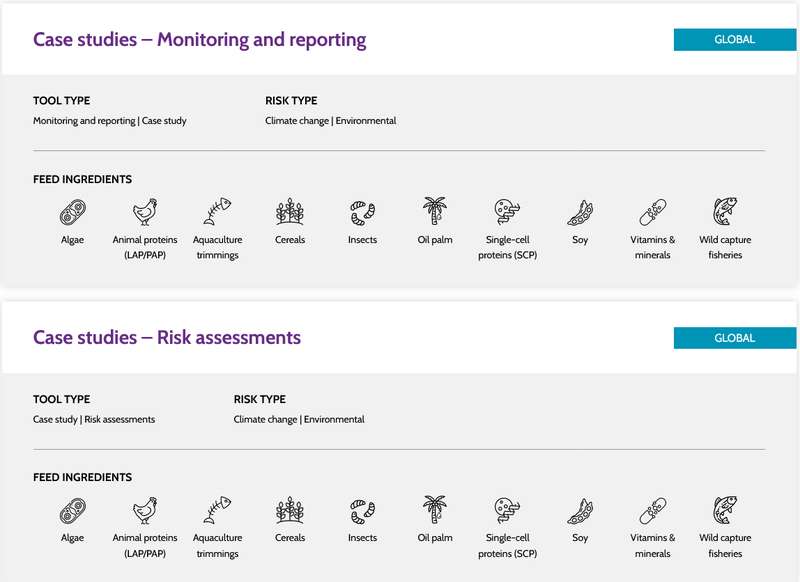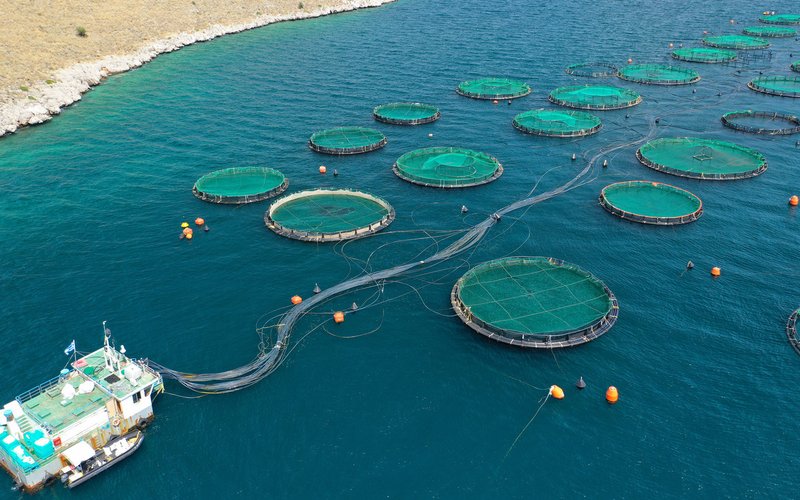Sustainable Fisheries Partnership (SFP) is getting ready to launch the Aquaculture Feed Solutions Toolkit, a one-stop resource for tackling climate change and environmental risks linked to aquafeeds.
The toolkit brings together the broad array of risk assessment tools, standards, and pre-competitive improvement initiatives that are available to improve feed production and reduce climate change and environmental impacts. It helps users find tools to draft commitments on feed or feed ingredients, conduct traceability on feed ingredients, conduct risk assessments on feed or feed ingredients, identify standards, implement improvements to address potential risks, and monitor and report the progress in each issue.
“We are not launching a new methodology or standard, what we want to do is to direct members of the seafood supply chain, whether a feed manufacturer, supplier or retailer, to a resource where they can gain access and learn more about the tools that can help improve the sourcing of feed and feed ingredients,” Paul Bulcock, aquaculture information manager at SFP, told Aquafeed.com at the Seafood Expo Global. “As others have said at Seafood Expo Global, if the industry wants responsible aquaculture, then it must have responsible feed supply and manufacture. We are zooming in on that with a library that contains tools and resources to manage the risks of aquafeed ingredients.”
The toolkit also includes advice from the Accountability Framework Initiative (AFI) and its roadmap. Case studies are also provided to highlight examples of best practices in the industry. “Case studies on other players and their commitments regarding climate change and feed can give users inspiration or set an example to someone else who is maybe interested in this,” Bulcock said.
The tools can be used across the whole value chain. “Basically, it is a one-stop shop to help users across the whole value chain. For those seafood supply chains that have not got a commitment on feed but want to, it is a good starting point especially if you break it down by committing to conducting risk assessments, and finding which standards they should be looking at. But it could also be used for those retailers, seafood suppliers, and seafood buyers to advance their sustainability commitments,” Bulcock explained. “If you are a smaller feed company and you might not be aware of various risk assessments and traceability tools then it can help you identify potential tools.”
“The toolkit is here to help companies tackle climate change, habitats and biodiversity risks associated with feed, and crucially all the ingredients it contains. It aims to help companies support improvements and measure risk and impact. This is the first step. We hope this is a useful tool for all members of the seafood supply chain,” Bulcock concluded.

The tool allows filtering and searching for specific feed ingredients, risks, geographies, or tool types. Here is an example of some results.













